
Site Search
Build It Right Or Build the Right One – A Product-Evergreen Debate!

Table of contents

Let's talk
Reach out, we'd love to hear from you!
A playful product pun? Game on! We are in! Our goal? Well, while we were brainstorming for ideas for our year-end articles, one particular idea stood out.
For the last decade or more, we have crafted products that cater to our esteemed clients and their specific industry verticals.
We often choose one between Frost’s “two roads”- either the right product or the right way to build a product, unknowingly. The idea here is to bring on a face-off between the two approaches. Post this, you will need to decide upon which of the two creates the most appeal and asserts the most efficiency.
While the thought is truly fetching, the narrative too will require some fine-tuning here. So, here is what we think of building a perfect product or building the product right. Bear with us!
For our read here, we split the article into two specific camps comprising its diverse range of tell-tale features.
With such a detailed roadmap laid out for the read, we are hoping the face-off match will be a roar.
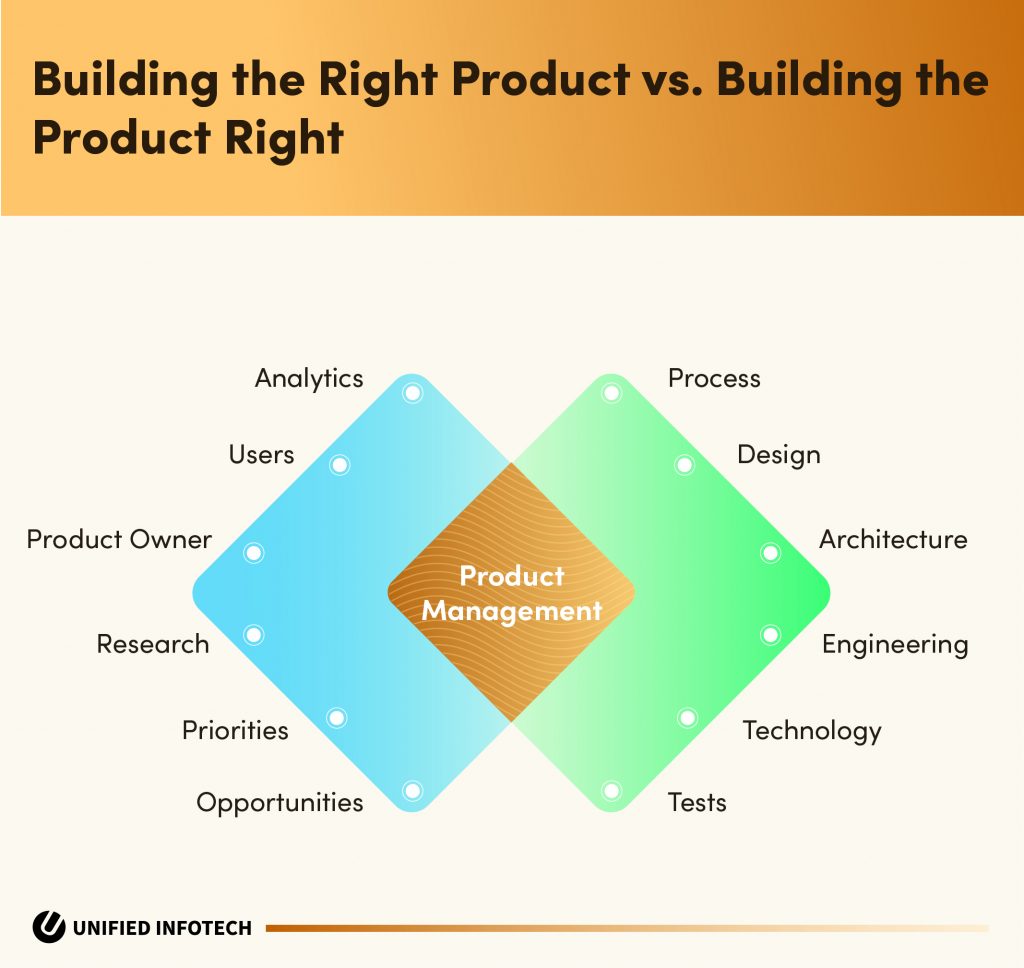
However, here is a disclaimer before you start the read –
“the product and the industry you are catering to have a lot to do with this decision. Add on to this, your team’s adaptability and flexibility factors.”
So, here we go – users, developers, Product Managers (PM), and product owners – this read is for all of you!
1. The Pandemic Product Market for 2021 & Beyond
It might be safe to say that never have we been this keen for a year to end like that of 2020. The year was an eclipse (with none of the aesthetic view) in itself. It brought in a multitude of nosedives in the business, financial, and career openings.
However, due to the novel pandemic, people are often opting for remote work. This led to a significant surge in the product development industry.
More and more organizations picked up their pace in the second half of the year. This was in an attempt to minimize the losses and meet up with their minimum cash-flow situation.
As a result, they leaned more towards innovation. This brought in to products that were relatively unique as compared to that of their competitors. The target was to capture the user’s attention and then convert them from being prospects to becoming clients.
One such innovative edge added to product development involves the digital transformation aspect.
The second half of 2020 witnessed some serious acceleration in the digital transformation endeavors for products. Some such transformed products even saw double-digit growth during this phase. Here is a detailed look into this aspect of product development.
2. Product and the Digital Transformation Approach
Truth be told, digital transformation is no ‘new kid on the block’. From Cloud Infrastructure to Platform-As-A-Service, the integration of digital transformation into products brought in commendable results. These results are visible across diverse industry genres that include the manufacturing, medical, and P&C industries.
For example,
A. Manufacturing industry
In this industry, the digital transformation approaches (as explained in our article Digital Transformation In Manufacturing) brought in hybrid products. Such products led to the perfect combination of the traditional gating procedure and the software development process.
B. Healthcare sector
With the digital transformation creating waves across all industries, the medical industry refused to fall behind. As a result, came the healthcare applications that have become a necessity for 2020 and beyond.
C. Miscellaneous
Like the sharks in the major industries, the relatively minor ones like the Wine Business too went on to be Technology-driven! This digital transformation-stricken product development-based awareness was possibly the most desired one across 2020!
Now, there is an ongoing debate on the approach to software development process.
One camp sternly believes in building the perfect product that caters to the clients, while the other concentrates on the right process to build the product. Here’s a look at what these two camps of product management for services look like –
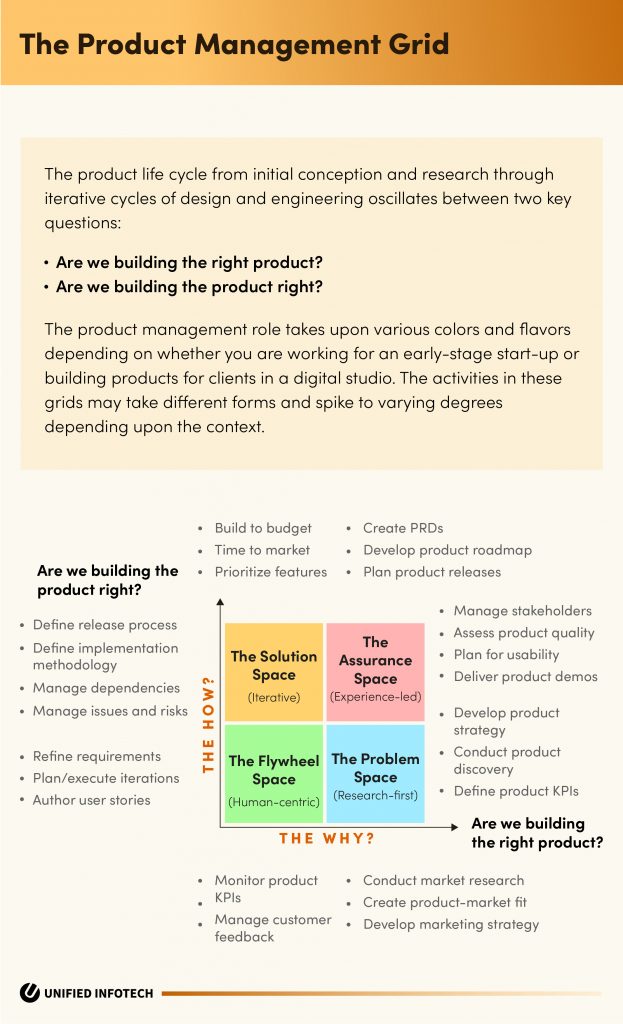
While the image merely showcases the tip of the iceberg of this debate, it’s time to delve into the details!
3. Building the Right Product
The groundwork involved in developing a product is a mammoth task in itself. Why else do you think a Project Manager goes berserk?
So, why again did we start focusing on the PMs? Well, they are a key angle to this topic. Considering the role they hold in projects, they are the ones who decide upon whether
i. Develop the right product or
ii. Build the product right or
iii. Strike the perfect balance between the two alternative roads.
But how do these tech wizards handle the decision? Here’s a look into their factors of consideration while going for the right product building –
A. Research
The first set of questions that crowd the PM’s mind before building the right product are –
i. Is this the problem that we should be targeting?
ii. Is the issue worth the time and effort that my team will be putting in?
iii. Considering that we identified the issue and developed the product, is this the right product? Will it meet the initially targeted issues of the user?
All of these concerns need to be integral to the research. And these help to validate any potential solutions and various business issues.
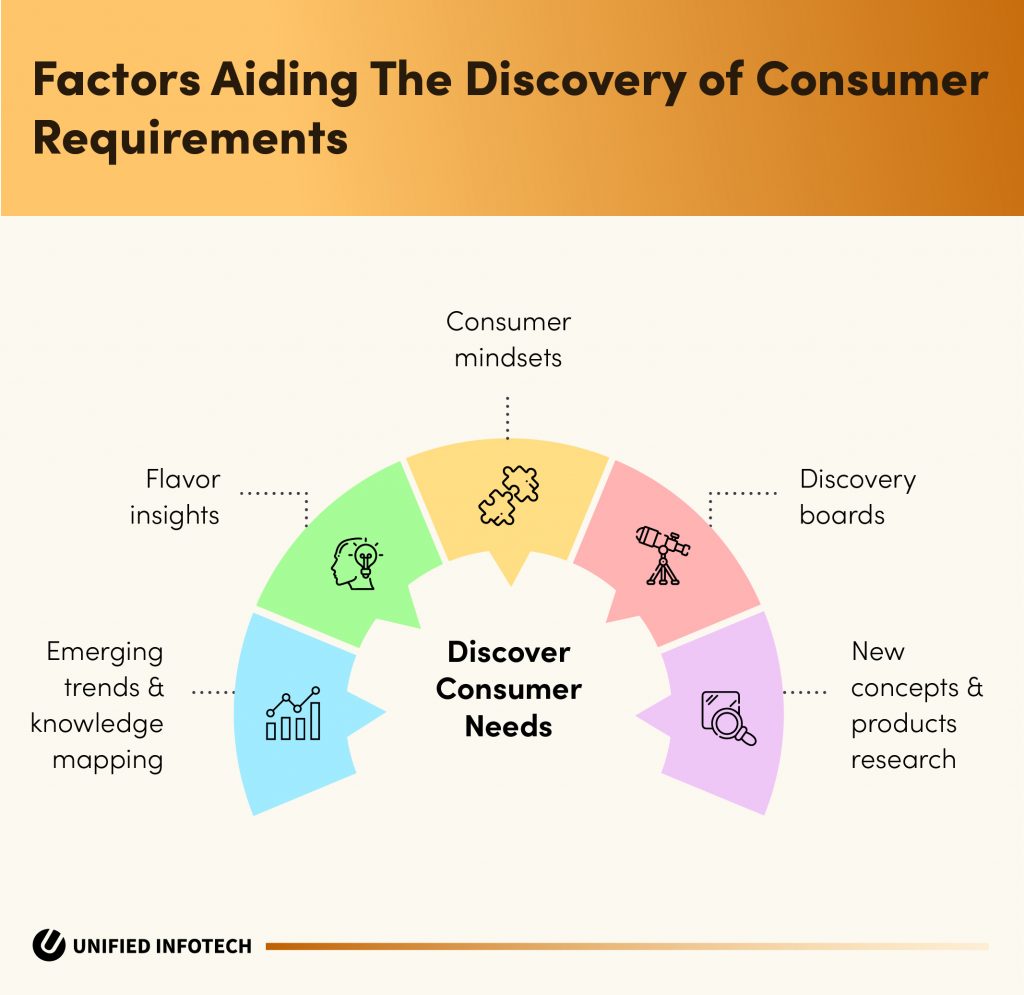
Such research can be the root of a diverse range of solutions. However, it is essential to understand its very nature first. Research, as an element of building a perfect product, can be of various types –
i. Competitive analysis
ii. Prototyping solutions
iii. Shadowing individuals engaged in the work
iv. Reading documentation
v. User interviews.
B. Users
To build the right product, one of the priorities is the user-angle. Catering to the user’s requirements, as product developers, you need to start understanding your users, their perspectives and ensure that the required product is focused on resolving the user’s issues.
However, one prominent hurdle is that more than often users are unable to articulate their issues. It then becomes the Product Manager’s responsibility to articulate the issues for the product owner to understand better.
This is followed by the-
i. Spotting of high scopes and
ii. Use of high-quality research resources and
iii. Use of analytics to seek the most suitable product-based solutions.
C. Product Owners
A product owner is as, if not more, important to a product development team as the PM. So, what is a product owner? He/she is entitled to make decisions about the product with the assistance of the PM.
Have you noticed how they handle the crucial decisions about the product? Additionally, they have a crucial role to play in the success or failure of a product. These key ‘stakeholders’ hold deep domain expertise that helps them make crucial decisions.
D. Priorities
How many times have you heard the word ‘triage’? That is while you are watching medical TV shows like The House, The Good Doctor, The Residents, or Chicago Medical?
Do you know what that means?
Well, theoretically, triage is the assignment of degrees of urgency to wounds or illnesses. This helps medical personnel to decide the order of treatment of a large number of patients or casualties.
By now you understand the crucial role played by the person who calls this shot, right?
In the case of the right product development, the PM handles the digital triage. It is the PM who decides in which order the queued up problems are to be solved. This means taking into account the right balance among cost, value, and risk calculation.
With so much down the line, our proficient PMs have chalked out their roadmap across this prioritization. Here’s a small sneak peek into it –
i. The priority is the high-value parts of a product. De-risk the areas and spot the unknown issues.
ii. Take into account the technical challenges across the product.
E. Analytics
So, the right product service management you offered to the clients has been launched. But, your job as a product developer and launcher doesn’t end there. You will need to continue to build the right product even after the launch.
Analytics helps one achieve this. Additionally, in case your launched product isn’t the right one, you can fine-tune it with analytics.
Such analytics requires an optimum setup. One needs to decide what is the perfect set of questions regarding data. This tooling needs to be a business requirement based and the outputs have to be actionable.
Before adding on to the analytics, make sure to decide upon –
i. The product-based queries,
ii. The plausible answers,
iii. The customization of products as per answer-requirements.
F. Scopes
So, let’s see –
Issue identification – check!
Solution offering – check!
The solution adopted by the user – Ummm…
So, here is the problem – the solution you offer needn’t be unique. Similar solutions often pre-exist in the market. This might make your user doubtful about your offered solution as software development process.
So, what do you do?
i. Identify opportunities by analyzing the market.
ii. Find your place across the industry.
iii. Look for your USP (Unique Selling Point).
iv. Conduct a holistic competitor analysis to identify opportunities.
This is all about building the right product. Seems appealing enough? But, we say, it’s too early to decide. Check-in with the “building the product right”, compare the methods, and then decide between the two!
You game? Time to hop in!
4. Building the Product Right – The Correct Software Development Process
With ‘building a product right’, the entire focus is on the product development process. However, the process brings with it diverse risks – this includes the risks that
I. the developed product will cater only to the product developers
ii. The product will satisfy the terms that were there at the beginning of each sprint.
With the intervention of an expert Product Manager, there are chances of balancing between the preset product goals and the technical necessities. For this to work out optimally, there are a listed number of elements that one needs to concentrate on –
A. Process
Let’s start by saying that the key to building the product right is leaving ample room for customization. The personalization of the development process factors the niche for the product.
Thereby, at Unified Infotech, we have created a skeleton roadmap. This roadmap helps us stay focused and ensure the efficiency of the functioning. Here is a look into the product development process followed by our expert Product Manager –
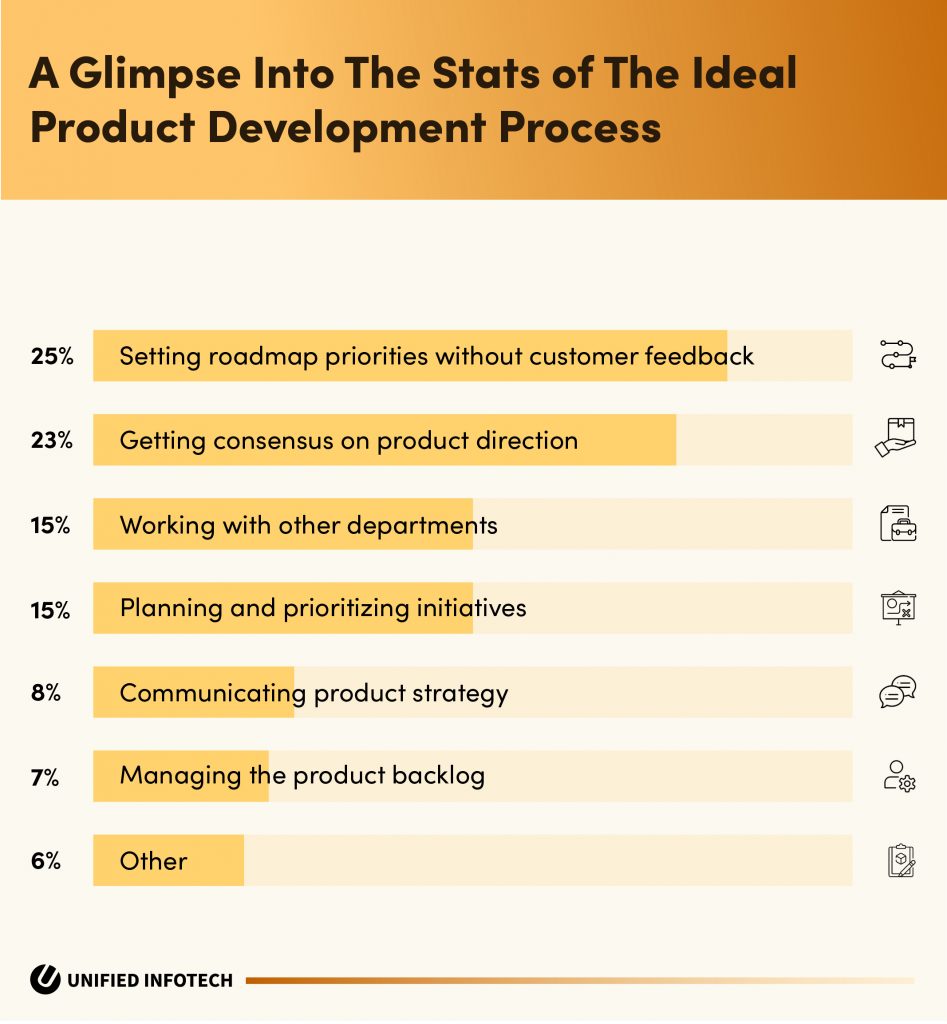
Step 1: Discovery Workshop
The Approach – This preliminary stage or the product discovery process mainly focuses on a client-team discussion. This involves running the project considering the initial agreements made and the proposals.
A Product Manager with his/her team will discuss the goals and objectives of the project. They gauge the competitive landscape, target audience, market, the client’s branding preference, document the preferred designs, and the epic mapping.
The Result – Taking into consideration the client’s opinion and requirements brings much-needed clarity to the project. As their expectations become transparent, this eases the working for the team. Subsequently, the planning phase initiates with the client’s feedback and input.
Step 2: Planning for software development process
The Approach – It is here that the branding guidelines, design, and project plan are clearly defined. One needs to prepare the relevant documents, and take into account the client’s approval for the execution of the project.
The Result – A well-planned project is now on the way to efficient execution with detailed documentation in hand. Subsequently, in our product management consulting services, the list of deliverables include –
i. project plan with detailed sprint planning,
ii. wireframes,
iii. test cases and scenarios and,
iv. user stories.
Step 3: Design
The Approach – Design thinking is building the right things. Our expert design team walks in. They start with the product designing based on the client-approved design guidelines and the wireframes.
Additionally, the team also takes into account the diverse devices from which the product will be accessed. Accordingly, the team crafts design that caters to web, mobile, and tablets.
The Result – Among the deliverables post this stage are –
i. clickable prototypes across Invision platforms,
ii. source files in the Sketch or Photoshop format, and
iii. the complete UI design of the project.
Step 4: Development
The Approach – The main product development stage is inclusive of catering to web services, backend, frontend, and API development integration.
This also comprises a strategic approach to the Agile Scrum methodology with the creation of an optimized clean code structure. Our methodology of agile is about building the right things.
The Result – The product is developed using the web and mobile technologies. This product may or may not be right on the first go. But, with client feedback and review, the product developed caters to their requirements and business goals.
Step 5: Testing
The Approach – No testing channel is left unturned. We tend to include – regression, manual, automation, unit, security, load & stress, code, and performance testing.
The Result – A ready-to-be-launched bug and glitch-free product is developed post the testing procedure.
Step 6: Maintenance
The Approach – Irrespective of whether the product has been launched or not, our support and maintenance service persists for our developed product.
As a part of the ‘building the product right’ approach, our team conducts
i. regular security audits,
ii. full testing of the system to spot errors, bugs, or incompatibility.
The product is also enhanced using an agile product management approach and bi-weekly code backups are conducted. Additionally, considering that any product launch would fetch massive traffic, our team helps monitor traffic and the server load.
They also aid in the optimization of the product as per the specific business requirements.
The Result – With post-launch maintenance, the client’s product is optimized as per the evolving market requirements. Additionally, it becomes bug-free and ready for multiple platforms.
This process described above is the core secret to the successful projects of our PMs with the “building the product right” approach. While this is the most crucial factor, it isn’t the only one. There are multiple other elements as well! Read on to know about these!
B. Architecture
Application architecture indicates achieving the simultaneous goals of executing the development for the present and planning for the future. This element is crucial. It makes sure that after the software development process, the product can be
i. fine-tuned,
ii. scaled, and
iii. calibrated
-to meet client requirements.
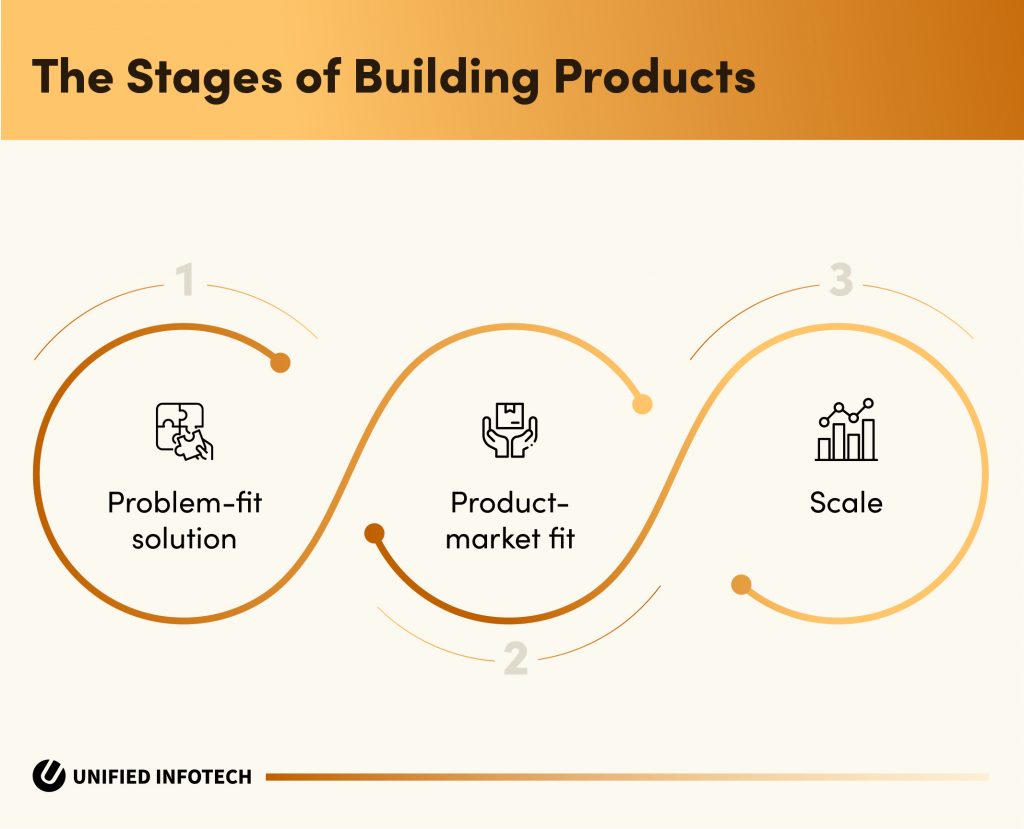
In this case, PMs offer a detailed roadmap. This roadmap would reflect all the trade-offs and all the costs involved. However, this is time-consuming since it is an ongoing procedure and requires the one responsible to revisit it regularly.
C. Design
We have an enhanced understanding of various client preferences. Thus, to ensure efficient working, our design team works in sync with our PMs.
The product design services include the cycle of converting the less-detailed and refined version of a product to its best version that is far more detailed and refined.
Additionally, we also make sure to validate our work across each step. This includes –
i. Extensive user testing
ii. Asking the user and the product owner about the quality of the work.
iii. Filtering out the noise by the PM.
Remember: Designing has a lot to do with branding and its identity. And as you know branding and its design is crucial to the brand image.
Thus, when it comes to the design element in designing the product right, it is crucial to imbibe the brand USP across the application. This will help users gauge and navigate across the developed product.
D. Technology used in software development process
Considering that you have provided your client with the perfect business solution, there is an aspect of technological choices. Each of these technological choices must necessarily have a trade-off. These trade-offs are as per the business needs. They include a wide range of things from ease to understand to speed.
Thus, for technologies to support your ‘building the product right’ approach, you would need the help of both –
i. The tools used, and
ii. Any required third-party integration.
E. Engineering
Digital product engineering services are the most crucial factor for the right process to build a product. With an intentionally accrued technical debt and thoughtful management of the same, there is a spike in the chances of success. This puts to test the bond-transparency between tech leads and PMs.
This relationship determines the success of the project. In this case, they should balance their skills and put their trust in each other while taking decisions. Here is what they can do –
i. PMs can provide feedback for their engineers at the earliest and frequently.
ii. Engineers should have access to detailed requirements and the crucial success terms.
iii. PMs should entrust the tech-team with their assigned work.
F. Tests/quality Analysis
We take pride in being one of the top website development and designing companies in New York. The reflection of this experience can be well visualized via the functioning of our developed & designed product. To ensure the efficient working of a product, we resort to both automated tests and manual quality analysis.
But, there is a major hurdle here. The testing or quality analysis process is a time-consuming one. To speed up the process, we involve the entire team from the very start. This also helps the entire team acknowledge the application’s holistic intention.
With the testing procedure, we can confirm that the product is working optimally. This supports the developers to move in swiftly if the product lags.
These sprint-based tests mitigate any over-the-top expenses considering how it sidelines any error at the earliest, before the final launch.
Conclusion
So, now you have the complete picture – a swift comparison between ‘building a perfect product’ and ‘building the product right’. With these forked roads in front of you, bring in the factors of
- Your business requirements,
- Market demands,
- Pros and cons
- User preferences
- Offered value
-and decide upon the option that best caters to you.
Whatever your chosen option may be, make sure to establish team transparency and in-sync functioning. So, there you go! Enjoy the read and enjoy the results!


